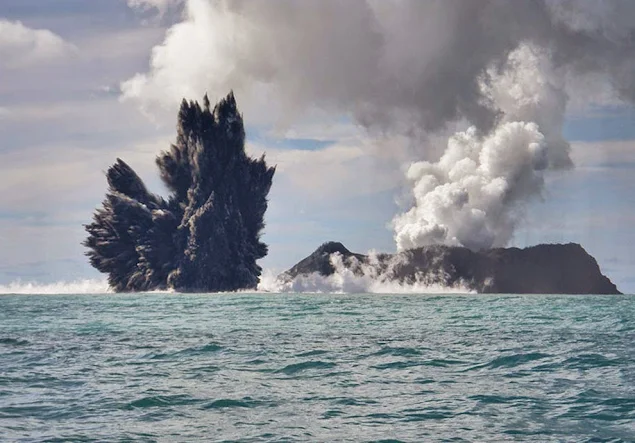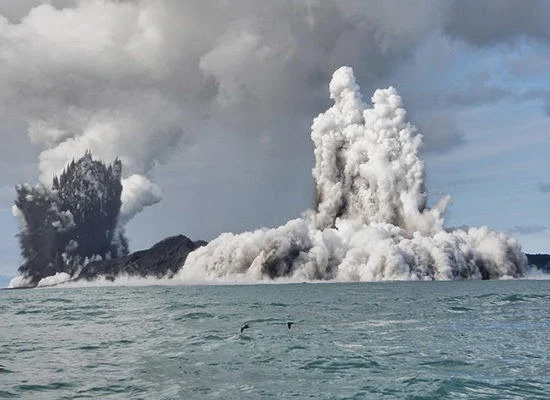Surtseyan Eruption
A Surtseyan eruption is a type of volcanic eruption that takes place in shallow seas or lakes. It is named after the island of Surtsey off the southern coast of Iceland.
Surtseyan eruptions typically occur in shallow bodies of water, such as lakes or oceans. When magma rises close to the surface of the water, it can come into contact with the water and cause it to flash to steam. The sudden increase in volume of the steam can cause an explosion, which can fragment the magma into small pieces. These pieces of magma, called tephra, can be ejected into the air, forming an ash column.
These eruptions are commonly phreatomagmatic eruptions, representing violent explosions caused by rising basaltic or andesitic magma coming into contact with abundant, shallow groundwater or surface water. Tuff rings, pyroclastic cones of primarily ash, are built by explosive disruption of rapidly cooled magma.
Surtseyan eruptions are relatively common, and they can be found all over the world. Some other examples of Surtseyan eruptions include the eruption of Stromboli in Italy, the eruption of Kameni in Greece, and the eruption of White Island in New Zealand.
Surtseyan eruptions can be very dangerous. The ash and rock fragments that are ejected into the air can travel long distances, and they can be a hazard to ships and aircraft. The sudden expansion of steam can also cause shock waves, which can damage buildings and other structures.





%20(1).webp)





